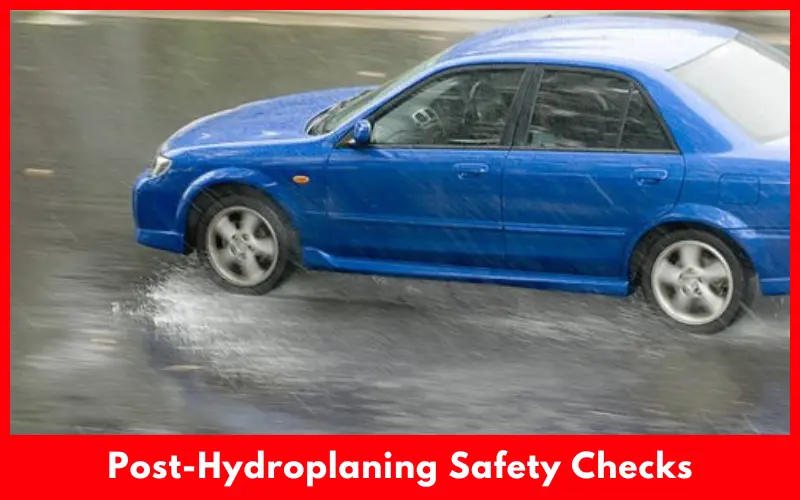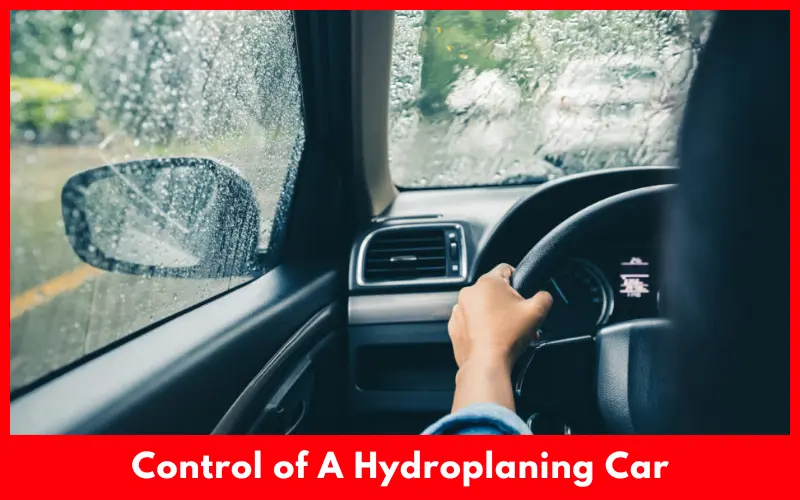When your car’s tires lose contact with the road due to water flow, the phenomenon known as hydroplaning takes place. When your car is hydroplaning, you will have little, if any control over it when it skims over the surface of the water.
This situation is both dangerous and scary, so in this article we will explain how you can avoid hydroplaning car and what you should do if you ever skid on a water layer.
Article Summary
How To Avoid Hydroplaning Car
There are some things you can do to markedly reduce your chances of ever hydroplaning in the first place. First, be sure that you have adequate tread depth on all your tyres. Tires with insufficient tread usually can no longer effectively evacuate water from the contact patch, drastically increasing your risk of hydroplaning in wet conditions.
Also, be sure to inflate your tyres to the recommended pressure for your vehicle. An under inflated tire has less contact with the road, limiting the grip on wet roads.
Slow down when driving in the rain. As a rule of thumb, it is not safe to drive the speed limit in the rain, in fog, or poor visibility, because your tyres will need to channel water more than when the roads are dry and you need the additional grip to slow your car in accordance with poor visibility.
Slow down, especially where water will take longer to channel out of the grooves on your tyres, such as underpasses, corners and dips, where the surface of the road is more prone to water accumulating, so stay away from them where possible.
Do not drive through the visible water or puddles. Before driving in the rain, make sure your car’s tire pressure are in good order, as are its brakes and the suspension system. If you do get involved in a crash you should consider contacting one of the excellent car accident attorneys at Paulson Coletti Trial Attorneys PC.
Immediate Response When Hydroplaning Starts
In the event that your car begins to hydroplane, try to remain calm. If you panic, you might do something that will cause you to lose the control of the car completely. Hold the steering wheel firmly to keep the car traveling in the direction you want it to travel.
Never accelerate or slam on the brakes while hydroplaning, as sudden changes in speed will further reduce traction with the road. Instead, make tiny, slight corrections in steering to keep your car travelling with the flow of traffic.
As you keep travelling, ease off the accelerator very gradually until the car slows on its own. You should feel the vehicle’s tyres re-establish contact with the road once you are past the water that hydroplaned you in the first place.
Regaining Traction and Control
Some tell-tale signs of hydroplaning are a lightness in the steering wheel, the feeling of your car skidding, and a sense that you’ve lost control over where the vehicle is pointing. If you experience any of these symptoms, the first thing you want to do is decelerate slowly.
Do not brake hard as this locks the wheels of your car, thereby removing your ability to steer the car. If a skid ensues, gently turn the steering wheel in the direction of the skid. For instance, if your car is skidding to the right, turn your steering wheel to the right as well.
This may seem counterintuitive, but it allows you to straighten out your car and hopefully bring it back to land. Do not overcorrect, as this allows the car to spin off in the opposite direction.
You might experience a vibrating in the brake pedal of your vehicle when braking. Don’t be alarmed if this occurs in a vehicle that has an anti-lock braking system or ABS – it merely means that ABS is working to prevent the wheels from locking up and to maintain control of the car. Continue to apply gentle pressure to the brake pedal as appropriate to slow or stop the car.
Post-Hydroplaning Safety Checks
When you manage to bring your vehicle under control, make sure of your vehicle condition so that it can travel safe. Please find a safe place to pull over to the side of the road, preferably a parking lot or a wide-shouldered roadside lane that puts you outside the mainstream of traffic.

Walk around your vehicle and inspect it for any damage to tyres, brakes and suspension. Be sure to get your tyres checked in a tyre service station, and have a qualified mechanic inspect your vehicle for any problems with the way it is driving.
You can do this early in the morning when you open your tyre shop. Also take a moment to reflect on the hydroplaning experience, and what steps you will take if you encounter a similar incident in the future.
Reacting Efficiently To A Hydroplaning Incident
Putting these suggestions from this article into practice and keeping a calm head will help you to keep more control of your car if you hydroplane at any time in the future. If you add to this mix keeping your car in good and safe shape, slowing down in poor weather conditions and driving in a less aggressive way.
You are also likely to prevent the need to face this type of situation altogether. We hope this article will keep you safe on the road the next time it’s pouring with rain!

